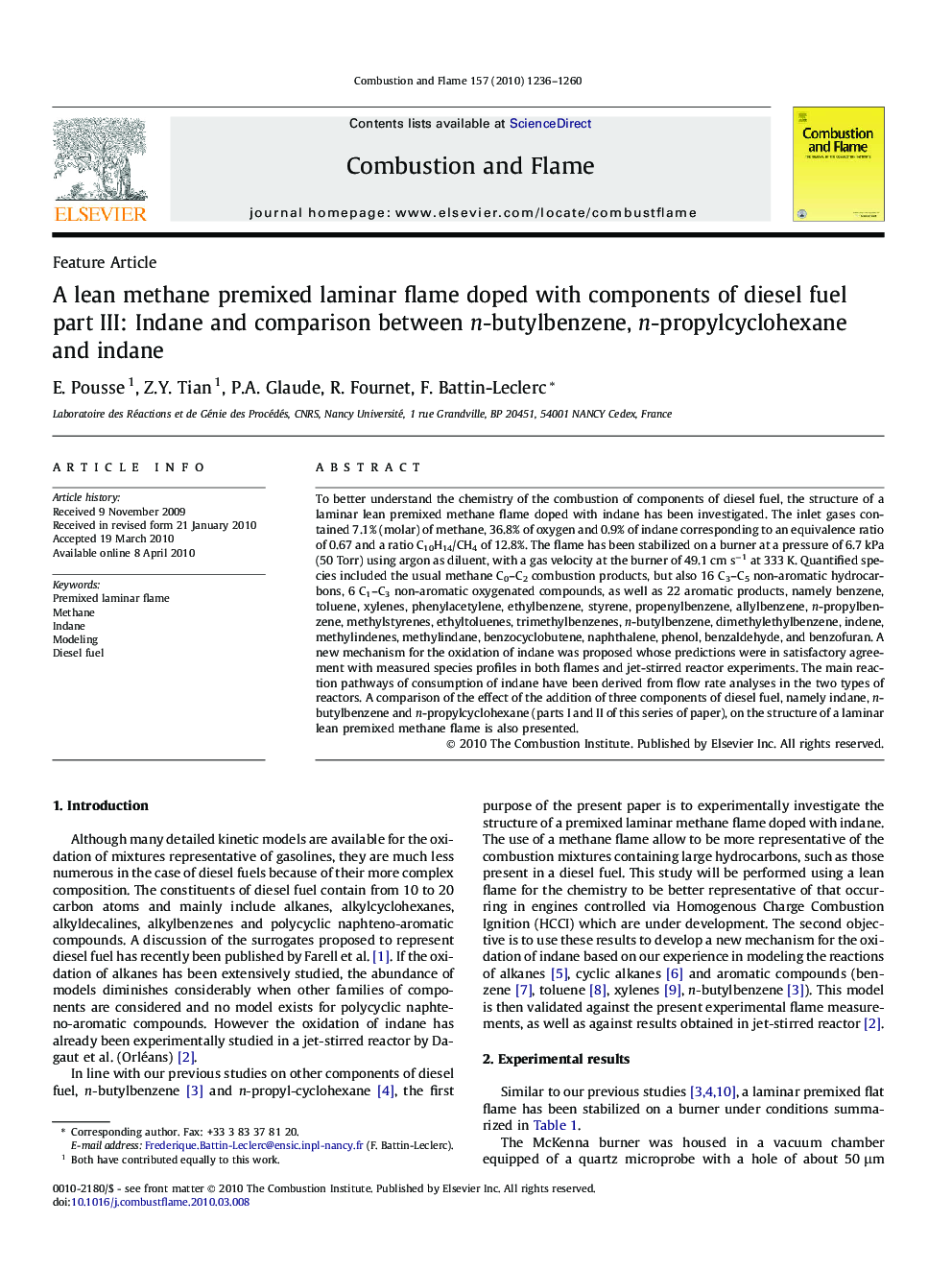| Article ID | Journal | Published Year | Pages | File Type |
|---|---|---|---|---|
| 169395 | Combustion and Flame | 2010 | 25 Pages |
To better understand the chemistry of the combustion of components of diesel fuel, the structure of a laminar lean premixed methane flame doped with indane has been investigated. The inlet gases contained 7.1% (molar) of methane, 36.8% of oxygen and 0.9% of indane corresponding to an equivalence ratio of 0.67 and a ratio C10H14/CH4 of 12.8%. The flame has been stabilized on a burner at a pressure of 6.7 kPa (50 Torr) using argon as diluent, with a gas velocity at the burner of 49.1 cm s−1 at 333 K. Quantified species included the usual methane C0–C2 combustion products, but also 16 C3–C5 non-aromatic hydrocarbons, 6 C1–C3 non-aromatic oxygenated compounds, as well as 22 aromatic products, namely benzene, toluene, xylenes, phenylacetylene, ethylbenzene, styrene, propenylbenzene, allylbenzene, n-propylbenzene, methylstyrenes, ethyltoluenes, trimethylbenzenes, n-butylbenzene, dimethylethylbenzene, indene, methylindenes, methylindane, benzocyclobutene, naphthalene, phenol, benzaldehyde, and benzofuran. A new mechanism for the oxidation of indane was proposed whose predictions were in satisfactory agreement with measured species profiles in both flames and jet-stirred reactor experiments. The main reaction pathways of consumption of indane have been derived from flow rate analyses in the two types of reactors. A comparison of the effect of the addition of three components of diesel fuel, namely indane, n-butylbenzene and n-propylcyclohexane (parts I and II of this series of paper), on the structure of a laminar lean premixed methane flame is also presented.
